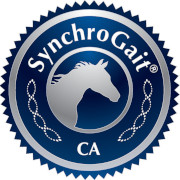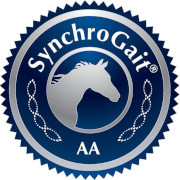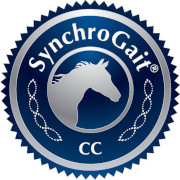Quick Summary
Sample Collection
Horse DNA tests are carried out using cells from the roots of a hair sample (roughly 20-40 hairs).
1. Grab about 10 hairs at the base.
2. Wrap the hairs around your finger and give it a quick pull.
3. Check the ends to make sure the pulled hairs have roots.
4. Repeat the process until you have collected about 20-40 hairs with intact roots.
5. You can choose different places on the mane or tail. NOTE: For foals, we recommend pulling all hairs from the tail only.
6. Tape the hairs to the submission form and fold the form along the dotted line to protect the sample. Do not use ziploc bags as they can cause condensation that allows mold to grow on the hair.
7. Place the folded form containing the sample in a paper envelope and mail it to the laboratory.
SynchroGait is a diagnostic DNA test for a genetic variant (A) that has a major impact on the gait and coordination of horses. The discovery by researchers in Sweden showed that the mutation “facilitates lateral gaits, ambling and pace, and inhibits the transition from trot or pace to gallop”. The gait A variant has been identified as a major genetic factor for performance in trotting horses and ability to perform the additional “flying pace” in Icelandic horses.
The variant detected by SynchroGait is the change of a single base (chr23: g.22 999 655C>A) in the doublesex and mab-3 related transcription factor 3 (DMRT3) gene. DMRT3 is expressed in certain spinal cord neurons and appears to play an important role in the development of the neuronal architecture controlling limb movement and locomotion. In horses with the genetic variant A, the substitution of the nucleotide adenine (A) in place of cytosine (C) produces a premature stop codon, creating a truncated protein product 174 amino acids shorter than the full-length protein. This truncated protein may affect the ability of DMRT3-expressing cells to develop into inhibitory interneurons, thus altering development of the locomotor network in the spinal cord and leading to proclivity toward certain gaits.
With SynchroGait owners can identify the innate ability of young horses for gait performance which facilitates decisions regarding investment in future training. Testing of breeding stock allows breeders to predict likely genotypes of offspring and to select optimal mates to maximize production of foals with the gait mutation. In breeds used for dressage or show jumping, where pacing is not a favorable trait, SynchroGait can be used to eliminate the pacing variant.
Benefits of the variant A in gaited breeds are:
Standardbreds: AA horses are more likely to race professionally; they earn more money and have higher breeding value for racing performance than CA and CC horses. SynchroGait test is particularly applicable to horses that have French Standardbred blood lines.
Coldblooded Trotters: presence of the A variant is correlated with trotting technique. AA horses have natural talent for pace and excellent leg coordination in trot at high speed.
Icelandic Horses: AA horses have a genetic predisposition to perform five gaits (walk, tölt, trot, gallop, and pace). CA and CC horses are more likely to perform only four gaits (walk, tölt, trot, and gallop).

 Horse has one copy of the variant that has a major impact on gait and coordination of leg movement. Horse has intermediate ability to perform additional gaits.
Horse has one copy of the variant that has a major impact on gait and coordination of leg movement. Horse has intermediate ability to perform additional gaits. Horse has two copies of the variant that has a major impact on gait and coordination of leg movement. Horse has innate ability to perform additional gaits. Training and other genetic factors contribute to overall quality of gait.
Horse has two copies of the variant that has a major impact on gait and coordination of leg movement. Horse has innate ability to perform additional gaits. Training and other genetic factors contribute to overall quality of gait. Horse does not have the gait variant that predisposes to performance of 4 or 5 gaits.
Horse does not have the gait variant that predisposes to performance of 4 or 5 gaits.